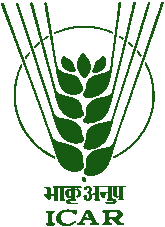
Animal Science
Sl. No.
|
Name of the Project
|
Funding
Agency
|
PI/ Co-PI/
Coordinator
|
1
|
Mega Seed Project on Pig
|
ICAR
|
PI
|
2
|
Poultry Seed Project
|
ICAR
|
PI
|
3
|
Comparative studies on productive and reproductive
performances of different breeds of pig in Nagaland
|
Institute
|
PI
|
4
|
Physiological and genomic regulation of early sexual
maturity in Ghungroo, Local and Crossbred pig of
North East India
|
Institute
|
PI
|
5
|
Livelihood improvement and empowerment of rural
poor
through sustainable farming system in Mon (NAIP,
Component III)
|
World Bank
|
Co-PI
|
6
|
Understanding the unique traits of indigenous pig and
poultry that make them resilient to climate change
(National initiative on climate resilient agriculture -
Theme 3)
|
ICAR
|
Co-PI
|
7
|
Resilient shifting cultivation for sustainable soil-water-
nutrient-plant continuum in hilly agriculture system of
Nagaland
|
Institute
|
Co-PI
|
In Nagaland, pig production system is mostly low input backyard and majority of pigs reared in this region are of non-descript type. Recently, Large Black cross and Ghungroo pigs were introduced in to the state through various organizations. Moreover, Naga Local pig, a miniature breed found previously as wild animal has now been domesticated and reared regularly at farmer’s backyard for meat. But the Naga local pig often produces less numbers of piglets and grows at slow rate than other crossbred and exotic pig. In this perspective, the project was conceptualized to study the productive and reproductive performances of three different pig breed viz., Large Black, Ghungroo and Local-Ghungroo cross under organized farm condition. Production performances were measured in terms of individual birth weight, pre-weaning growth rate, post-weaning growth rate and weight at maturity in selected gilts of all three breeds. On the other hand, the reproductive performance was elucidated in terms of age at puberty, conception, gestation period, litter size at birth, litter weight at birth and weaning, weaning to estrus interval, and inter farrowing interval in Large Black, Ghungroo and Local-Ghungroo cross gilts at first parities and in sows up to sixth parities and above. Further, the endocrine profile was monitored in terms of plasma estradiol and progesterone profile during pre-puberty (2nd to 7th months), estrous cycle and during pregnancy. All the data generated in present study were analyzed using standard statistical software (SPSS 16.0, USA). The data were presented as mean ± SEM. The level of significance was determined at p<0.05.
The results revealed that the Large Black pig performs better in terms of birth weight (1.113 kg), pre-weaning (176.67 g) and post-weaning (361.73 g) growth rate, weight at maturity (65.33 kg at 7th month) and feed conversion efficiency (3.4). In contrary, the Ghungroo breed performs better in terms of reproductive performance at first parity and maintains consistently higher litter size up to sixth parity and above (8.51 to 11.33). In Ghungroo pig, the major reproductive traits at first parity was observed as age at first estrus (239.20 days), litter size at first parity (8.51), avg. birth weight (0.884 kg), weaning to estrus interval (15.10 days) and inter farrowing interval (179.33 days). As compare to Ghungroo, the Large Black pig produces less number of piglets throughout the parities (7.18 to 9.24) and requires longer weaning to estrous interval (25 to 35 days). Although, the Local-Ghungroo cross pig produces large litter (7.56 to 14) with shorter weaning estrus interval (11.5 to 29.5 days), the low birth weight (0.706 g) leads to higher pre-weaning mortality. The endocrine profile in terms of plasma estradiol and progesterone level reflects the early onset of physiological cyclic activity in Ghungroo pig (3-4 months) than the Large Black pig (5-6 months), much earlier than exhibition of behavioural estrus. Hence, proper management, provision of quality feed and proper estrus detection practice could reduce the age at first conception and ultimately lengthen the productive lifespan. From this study it is concluded that the Large Black and Ghungroo pigs are well adapted to Nagaland condition and cold be promoted for popularization in field condition.
The results revealed that the Large Black pig performs better in terms of birth weight (1.113 kg), pre-weaning (176.67 g) and post-weaning (361.73 g) growth rate, weight at maturity (65.33 kg at 7th month) and feed conversion efficiency (3.4). In contrary, the Ghungroo breed performs better in terms of reproductive performance at first parity and maintains consistently higher litter size up to sixth parity and above (8.51 to 11.33). In Ghungroo pig, the major reproductive traits at first parity was observed as age at first estrus (239.20 days), litter size at first parity (8.51), avg. birth weight (0.884 kg), weaning to estrus interval (15.10 days) and inter farrowing interval (179.33 days). As compare to Ghungroo, the Large Black pig produces less number of piglets throughout the parities (7.18 to 9.24) and requires longer weaning to estrous interval (25 to 35 days). Although, the Local-Ghungroo cross pig produces large litter (7.56 to 14) with shorter weaning estrus interval (11.5 to 29.5 days), the low birth weight (0.706 g) leads to higher pre-weaning mortality. The endocrine profile in terms of plasma estradiol and progesterone level reflects the early onset of physiological cyclic activity in Ghungroo pig (3-4 months) than the Large Black pig (5-6 months), much earlier than exhibition of behavioural estrus. Hence, proper management, provision of quality feed and proper estrus detection practice could reduce the age at first conception and ultimately lengthen the productive lifespan. From this study it is concluded that the Large Black and Ghungroo pigs are well adapted to Nagaland condition and cold be promoted for popularization in field condition.



